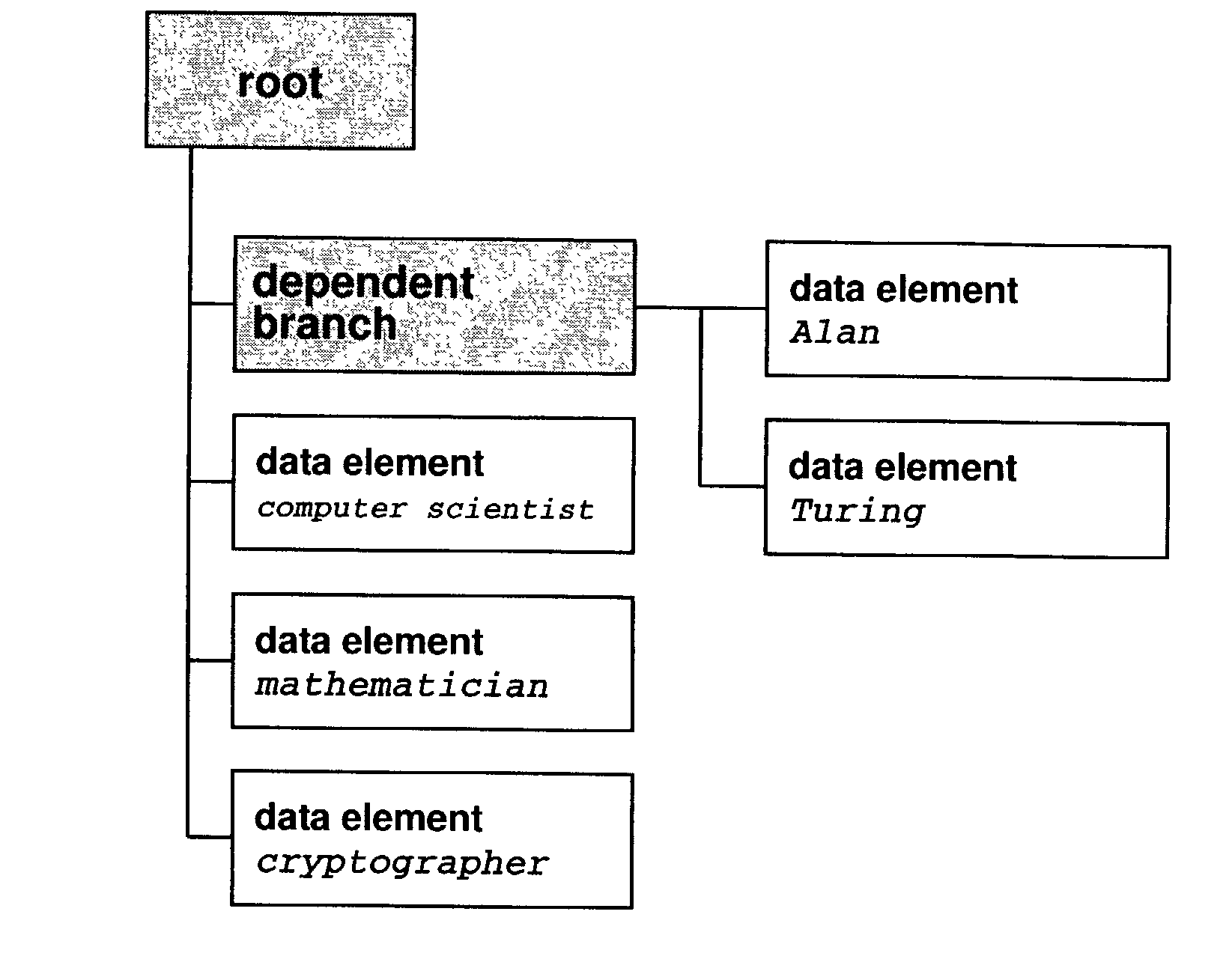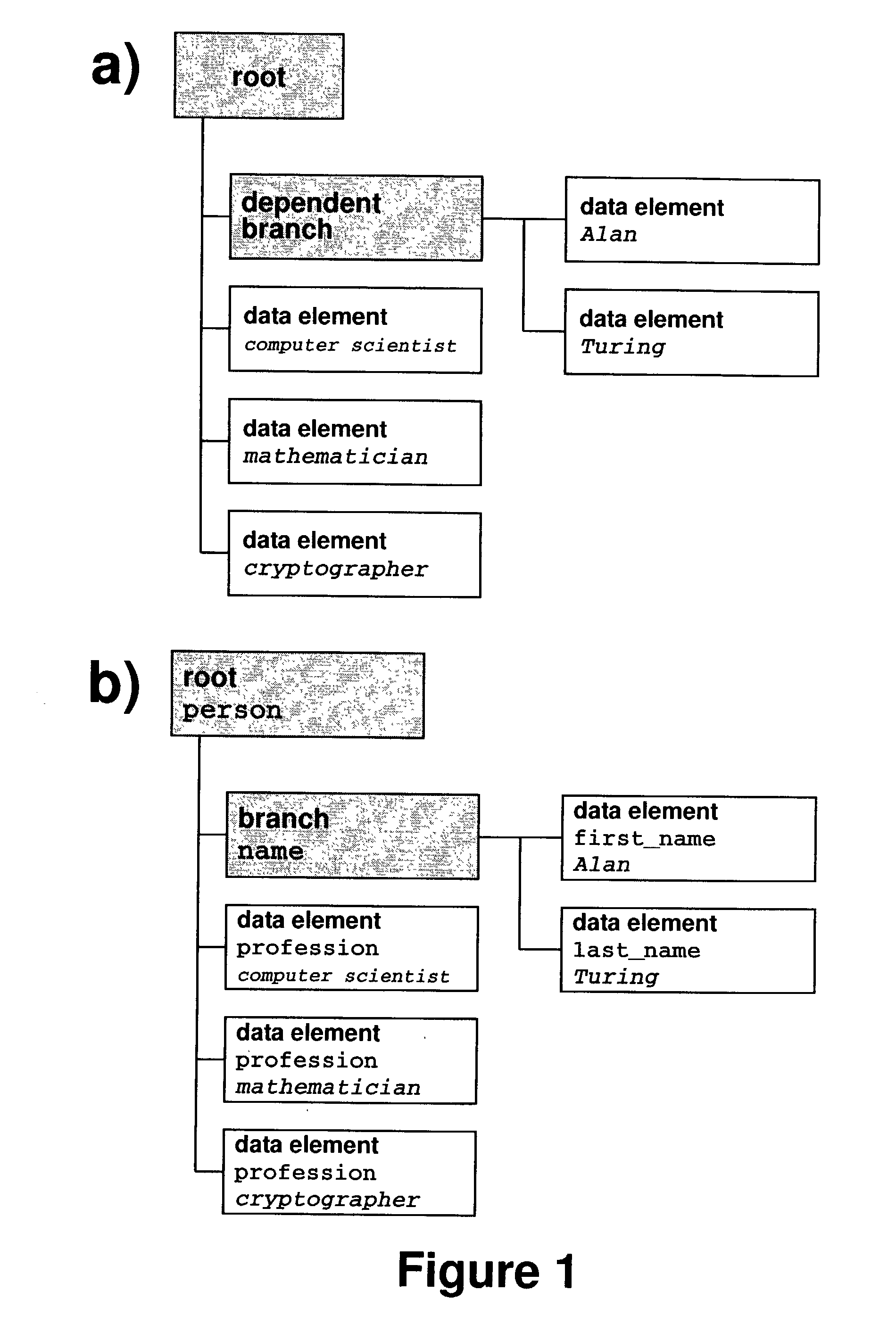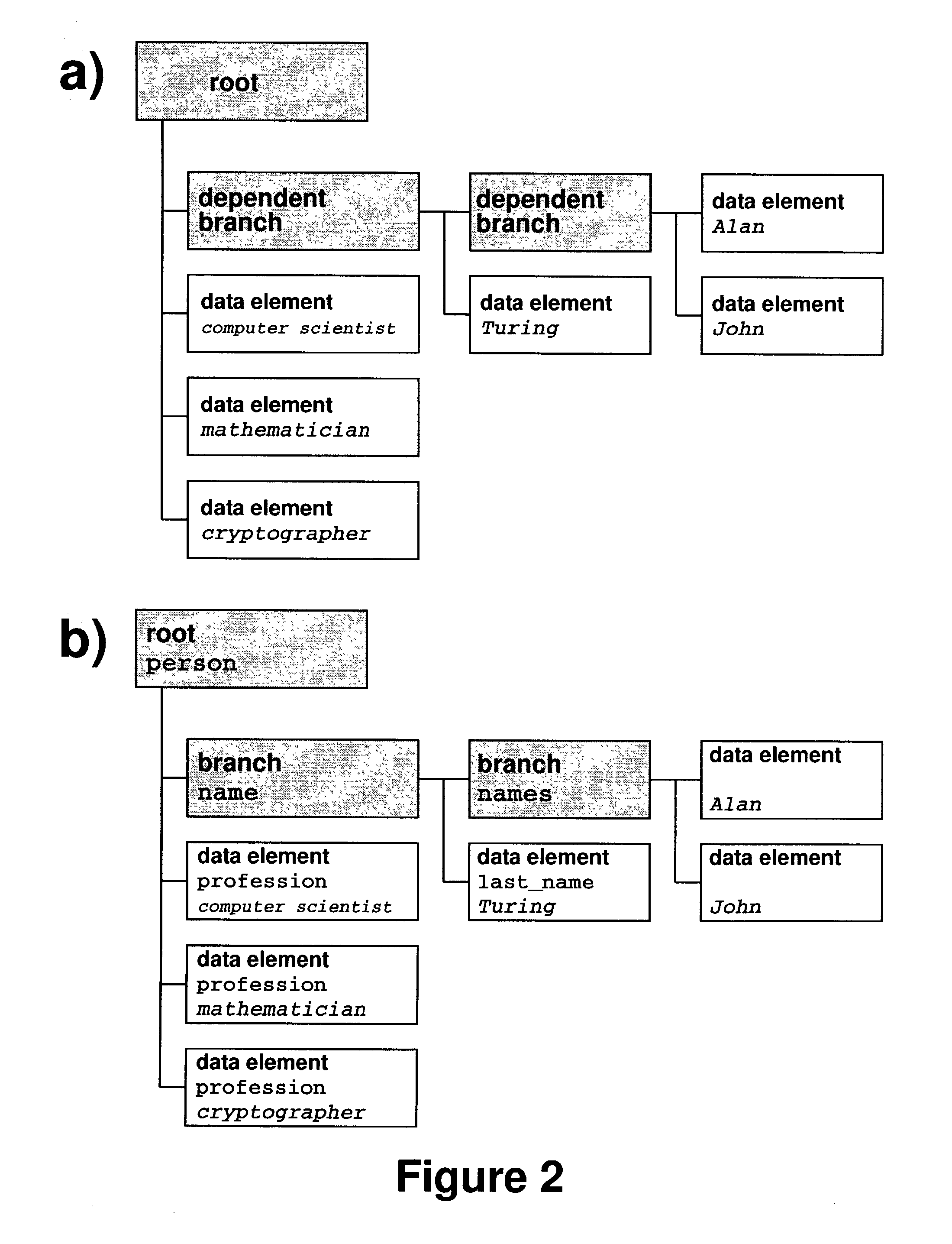Efficient method to describe hierarchical data structures
a hierarchical data and efficient technology, applied in the field of efficient methods to describe hierarchical data structures, can solve the problems of large increase in data volume, high cost of additional hardware installation, purchase, administration and maintenance, etc., and achieve the effect of reducing the overall development, building, operation and maintenance costs
- Summary
- Abstract
- Description
- Claims
- Application Information
AI Technical Summary
Benefits of technology
Problems solved by technology
Method used
Image
Examples
example 1
[0032] Example 1 describes the data structure shown in FIG. 1a using 14 meta characters versus a data content of 54 characters. This results in a total of 68 characters (not counting empty space) and a ratio content / meta characters of nearly 3.9. Additionally, the description is very well structured, easily readable even by persons without special computer skills and can be created and edited very efficiently.
example 2
[0033] EDL-document according to claim 1 to describe the hierarchical data structure shown in FIG. 2a with three nested branch:
2 { # start of root branch { # start of sub-branch B1 { # start of sub-branch B1.B2 'Alan' # data element in branch B1.B2 'John' # data element in branch B1.B2 } # end of branch B1.B2 'Turing' # data element in branch B1 } # end of branch B1 'computer scientist' # data element in root branch 'mathematician' # data element in root branch 'cryptographer' # data element in root branch } # end of root branch Statistics: Total: 76 characters (without empty space like SPACE, CR & TAB) with: 18 meta characters (printed plain) 58 content (printed in italics) ratio content / meta characters: 58 / 18 = 3.222
[0034] Example 2 illustrates, that sub-branches may contain own sub-branches and that sub-branches and data elements may be arranged in any order within the super-branch. The number of nested branch levels as well as the number of data elements and sub-branches within ...
example 3
[0036] EDL-document according to claim 4 to describe the hierarchical data structure shown in FIG. 1b with named branches and data elements. Of cause, branches or data elements may remain anonymous. Nevertheless, a unique human and automatic interpretation is facilitated if--like in the given example--all elements are named.
3 person { name { first_name 'Alan' last_name 'Turing' } profession 'computer scientist' profession 'mathematician' profession 'cryptographer' } Statistics: Total: 127 characters (without empty space like SPACE, CR & TAB) with: 73 meta characters (printed plain) 54 content (printed in italics) ratio content / meta characters: 54 / 73 = 0.7397
[0037] In Example 3 the complete data structure is described using 73 meta characters--where branch and data element names are counted as meta characters--compared to a data content of 54 characters. This results in a total of 127 characters (not counting empty space) and a ratio content / meta characters of nearly 0.74. The naming...
PUM
 Login to View More
Login to View More Abstract
Description
Claims
Application Information
 Login to View More
Login to View More - R&D
- Intellectual Property
- Life Sciences
- Materials
- Tech Scout
- Unparalleled Data Quality
- Higher Quality Content
- 60% Fewer Hallucinations
Browse by: Latest US Patents, China's latest patents, Technical Efficacy Thesaurus, Application Domain, Technology Topic, Popular Technical Reports.
© 2025 PatSnap. All rights reserved.Legal|Privacy policy|Modern Slavery Act Transparency Statement|Sitemap|About US| Contact US: help@patsnap.com



